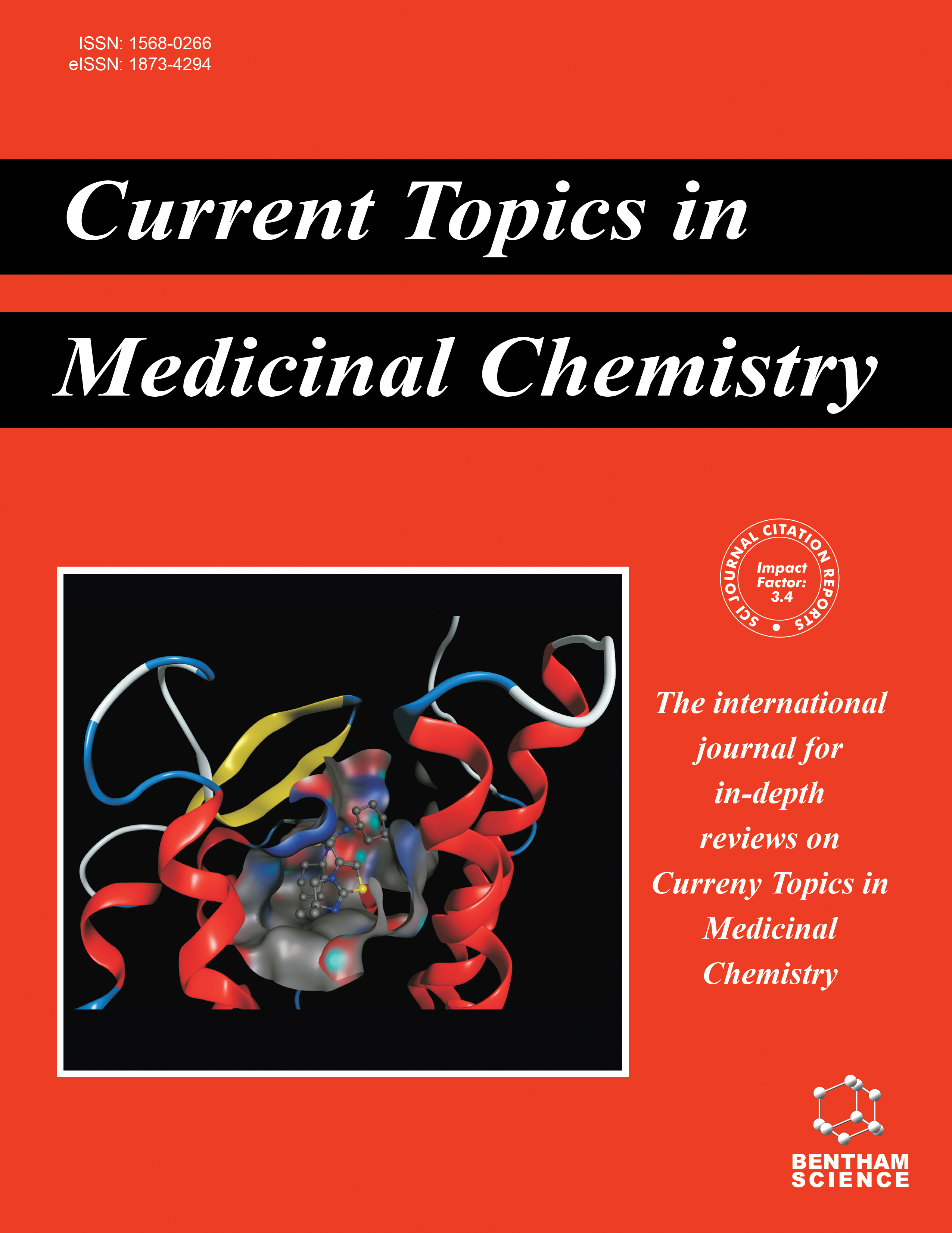- Home
- A-Z Publications
- Current Topics in Medicinal Chemistry
- Previous Issues
- Volume 11, Issue 18, 2011
Current Topics in Medicinal Chemistry - Volume 11, Issue 18, 2011
Volume 11, Issue 18, 2011
-
-
Editorial [Hot Topic: Recent Developments in Prodrug Design: Drug Targeting, Pharmacological and Pharmacokinetic Improvements Related to a Reduction of Adverse Effects (Guest Editors: Daniela Melisi & Maria Grazia Rimoli)]
More LessAuthors: Daniela Melisi and Maria Grazia RimoliNowadays, prodrugs are widely exploited in the pharmaceutical industry to obtain new and more effective therapeutic strategies at the lowest costs. In commenting about the success of this pharmaceutical innovation, it is enough to say that the currently commercialized prodrugs are definitely comparable to new synthetic drugs in terms of both their pharmacodynamic and pharmokinetic profiles. Accordingly, this appr Read More
-
-
-
Prodrugs - An Efficient Way to Breach Delivery and Targeting Barriers
More LessAuthors: Kristiina M. Huttunen and Jarkko RautioThe study of prodrugs that are chemically modified bioreversible derivatives of active drug compounds to alter their undesired properties has been expanded widely during the last decades. Despite the commercial success the prodrugs have afforded, the concept is still quite unknown among many scientist. Furthermore, many scientists regard prodrugs as a pure interest of academic research groups and not as a feasible solu Read More
-
-
-
D-Galactose as a Vector for Prodrug Design
More LessAuthors: Daniela Melisi, Annalisa Curcio, Elvira Luongo, Elena Morelli and Maria Grazia RimoliD-galactose is a simple and natural compound that has mainly been exploited in prodrug strategies. Galactosyl prodrugs can be considered a good approach to reach different goals in clinical drug application, especially when traditional drugs are likely to fail therapeutically owing to reasons such as the lack of site specificity, toxicity, and chemical instability. Indeed, of paramount importance is their ability to increase the selec Read More
-
-
-
Prodrug Strategies for Antihypertensives
More LessAuthors: Suneela S. Dhaneshwar, Metreyi Sharma, Vivek Patel, Upasana Desai and Jiten BhojakThere is a great emphasis on research to discover methods aimed at enhancing the efficacy of drugs and reducing their toxicity and unwanted side effects. Prodrugs are biologically inactive compounds that are converted to actual drug molecule, through biotransformation, that combine with the receptors to produce the biological action. Prodrugs can thus be considered as drugs containing specialized nontoxic protective groups Read More
-
-
-
Rational Design and Development of Colon-Specific Prodrugs
More LessAuthors: Suneela S. Dhaneshwar and Gaurav VadnerkarEarlier colon was considered as a black-box, acting as a site for production and temporary storage of excreta and responsible for absorption of electrolytes and water. But, with the discovery of sulfasalazine as colon-specific prodrug, the promising and challenging issue of treating local pathologies was presented with colon as an organ of significance for target-specific delivery of drugs. The need and desirable attributes Read More
-
-
-
Anticancer Prodrugs: An Overview of Major Strategies and Recent Developments
More LessAuthors: Silvia Arpicco, Franco Dosio, Barbara Stella and Luigi CattelResearch in anticancer chemotherapy has produced outstanding results, and mean survival rates have significantly improved over the last ten years. Nevertheless, all approved drugs are still characterized by narrow therapeutic windows that result mainly from their high systemic toxicity combined with their marked lack of tumor selectivity. Medicinal chemistry responds to the resulting demands with new analogues of a le Read More
-
-
-
Macromolecular Prodrugs Based on Synthetic Polyaminoacids: Drug Delivery and Drug Targeting in Antitumor Therapy
More LessAuthors: Gennara Cavallaro, Giovanna Pitarresi and Gaetano GiammonaIn the last twenty years a depth study on potential pharmaceutical applications of synthetic polymers at proteinlike structure as carrier for macromolecular prodrug production has been performed in academia and in industry. In particular α,β-poly(N-2-hydroxyethyl)-DL-aspartamide (PHEA), α,β-polyaspartylhydrazide (PAHy), poly(glutamic acid) (PGA), poly(aspartic acid) (PAA) and polylysine (PLL) have been extensively Read More
-
Volumes & issues
-
Volume 25 (2025)
-
Volume 24 (2024)
-
Volume 23 (2023)
-
Volume 22 (2022)
-
Volume 21 (2021)
-
Volume 20 (2020)
-
Volume 19 (2019)
-
Volume 18 (2018)
-
Volume 17 (2017)
-
Volume 16 (2016)
-
Volume 15 (2015)
-
Volume 14 (2014)
-
Volume 13 (2013)
-
Volume 12 (2012)
-
Volume 11 (2011)
-
Volume 10 (2010)
-
Volume 9 (2009)
-
Volume 8 (2008)
-
Volume 7 (2007)
-
Volume 6 (2006)
-
Volume 5 (2005)
-
Volume 4 (2004)
-
Volume 3 (2003)
-
Volume 2 (2002)
-
Volume 1 (2001)
Most Read This Month
Article
content/journals/ctmc
Journal
10
5
false
en


